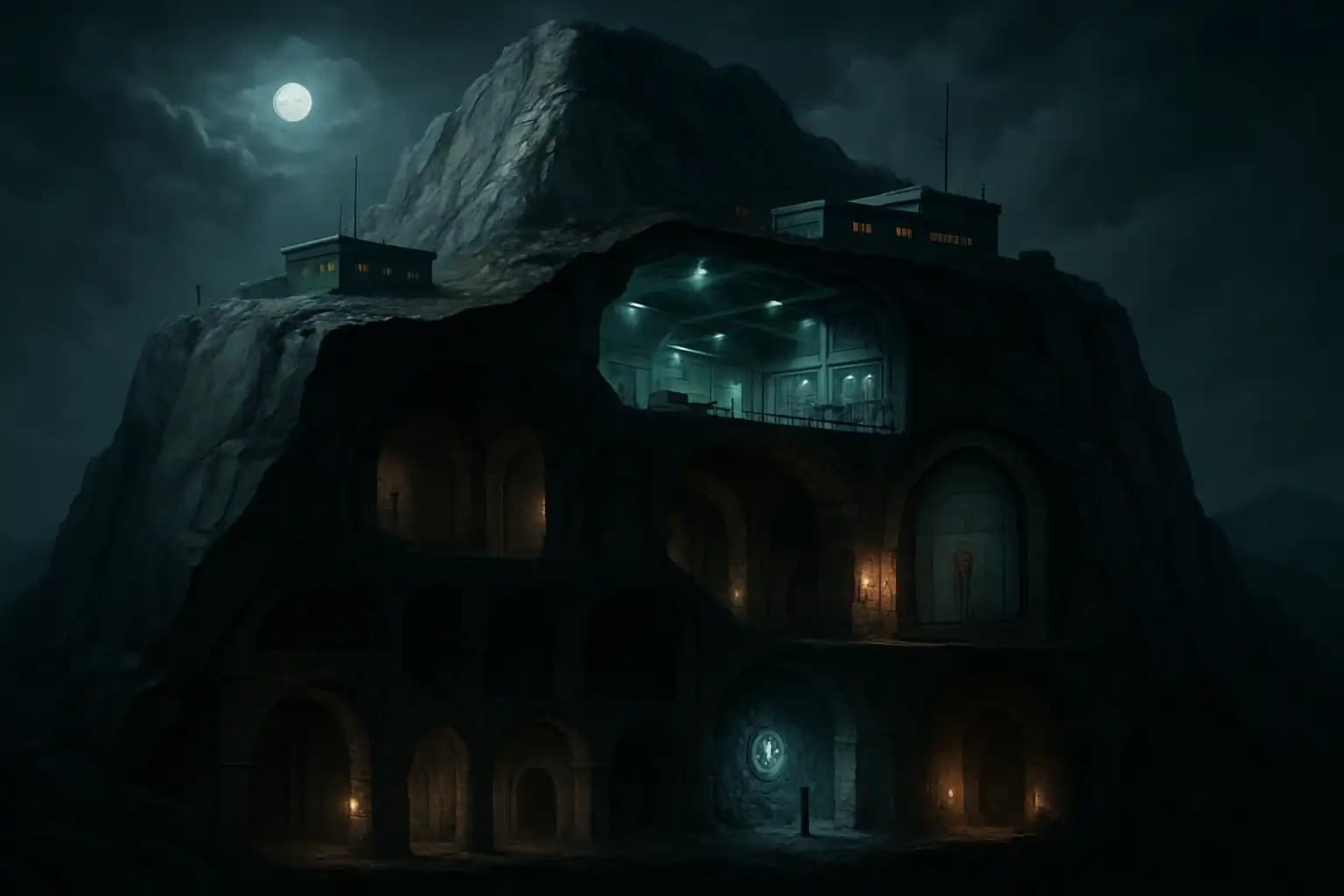Hidden beneath hundreds of meters of solid granite, the Cheyenne Mountain Complex is an engineering marvel tailor-made for nuclear Armageddon. Conspiracy buffs suggest it may have older origins. Officially, this Colorado Springs colossus arose in just six years during the 1960s. However, skepticism grows alongside rumors of ancient tunnels and “found” facilities. This fuels debate about whether humanity’s greatest subterranean complexes originate in the recent past or lost chapters of ancient civilization.
The world has a fascination with locked doors, hidden passageways, and faceless authorities. During the Cold War, the Cheyenne Mountain bunker became a symbol of American strength. It also served as a backdrop for countless stories about repurposed ruins, concealed histories, and civilization-level cover-ups. But where does factual engineering stop, and legend begins?
Cheyenne Mountain Complex: Official History Versus Ancient Rumor
Extensive documentation, including the Wikipedia entry on Cheyenne Mountain Complex, states this military site was built between 1961 and 1967. It features vast chambers, a powerplant, 25-ton blast doors, and its own spring-fed water system—all protected by 2,000 feet of granite. It might sound like sci-fi, but it gets better: the complex contains fifteen multi-story buildings mounted on over 1,000 shock-absorbing springs, designed to survive a 30-megaton blast from a mile away. Its self-sustaining features inspire theories that military planners either learned from or capitalized on older engineering hidden beneath.
Yet, under the streamlined military narrative, skeptics point to the complex’s inaccessibility and eerie parallels with other locations thought to have ancient roots. The debates echo legendary underground tales from Russia and controversial discoveries in mysterious Chinese caverns. Are we merely decades away from the builders—or millennia? Some claim the mountain’s tunnels resemble stonework and layouts found far outside Colorado, wondering if military secrecy is just one chapter in a much longer tale.
Military Designation and the Locked-Down Legacy of Ancient Sites
Military sites often operate under classification and restricted access, whether for national security or to conceal even stranger truths. It’s hard to identify where justified secrecy ends and protective legend begins. Similar mysteries circulate around prohibited Antarctic zones and escalating suspicions about NASA-led schemes, as well as sudden, unexplained archaeological finds. By labeling a site with military designation, public oversight vanishes—fostering further rumors.
The Cheyenne Mountain Complex’s imposing blast doors and strictly controlled visitor access have sparked intense speculation. Critics argue that military legal frameworks obscure evidence of an Old World legacy, reflecting the protective legal maneuvers safeguarding secrets—from declassified government apocalypses to modern whistleblower sagas.
Underground Cities: Between Engineering Feat and Archaeological Mystery
The belief that today’s bomb-proof labyrinths are simply modern facelifts for ancient complexes isn’t confined to Colorado. Be it the Cheyenne Mountain maze, Russia’s rumored Tartarian tunnels, or the enigmatic Longyou Caves, theorists draw connections between modern installations and ancient structures. Military cover-ups and lost civilizations have become inseparable allies. The deeper a base digs—and the more silence surrounds its origins—the more speculation arises about ancestral knowledge, lost cities, and intentionally erased history.
Some rational voices emphasize geological and engineering plausibility. Yes, modern technology can achieve such construction feats, but the organization and speed (six years for Cheyenne Mountain!) appear ambitious even for peak Cold War America. When myth, legitimate mystery, and bureaucratic obstacles collide, a new kind of legend emerges.
Cold War Shadows and the Temptation of the Forbidden
Interest in military sites isn’t new, but it intensifies when gaps in public knowledge meet archaeological oddities and ancient folklore. From nuclear preppers influenced by dark age cataclysm scenarios to ongoing rumors of controlled disclosures, secretive underground installations reflect our deepest fears and wildest dreams.
Perhaps some doors stay locked solely because we persist in trying to force them open within our imaginations. Whether the Cheyenne Mountain Complex and its global counterparts are cutting-edge solutions or ancient relics of forgotten civilizations, their mystique is unlikely to fade soon. Stay informed about military mysteries, lost worlds, and government secrecy at Unexplained.co—just avoid triggering any alarms.





